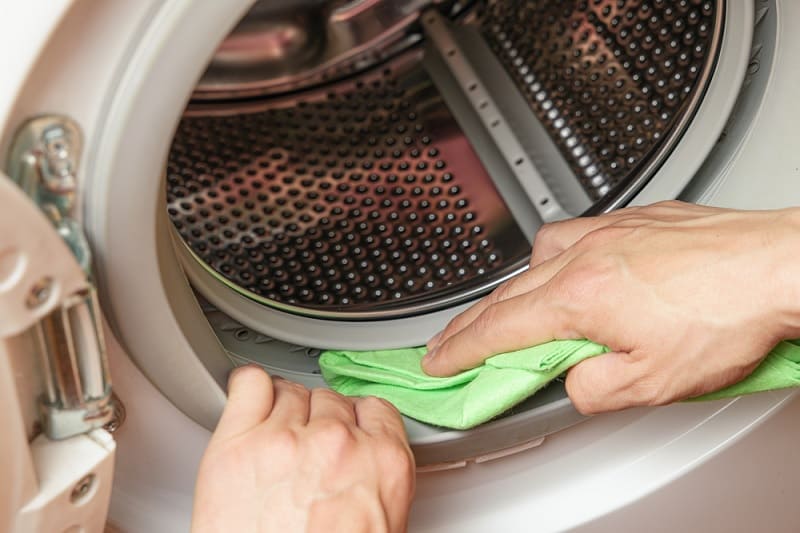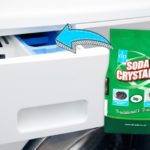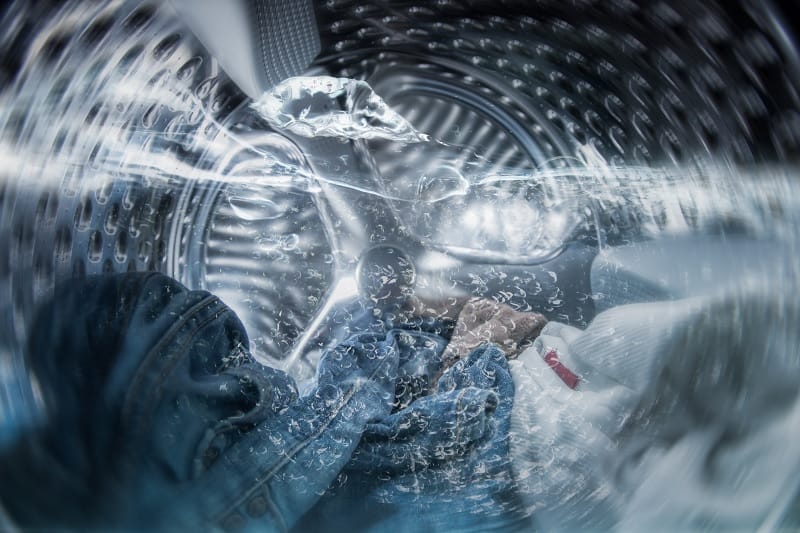Many people overlook an essential part of the washing machine that needs regular cleaning: the washing machine seal.
The rubber door seal (also known as a gasket or bellow) is crucial in preventing water leakage and ensuring an effective wash cycle.
Over time, it can accumulate dirt, grime, and mould, leading to unpleasant odours and hindering the washing process.
This article teaches you how to clean the washing machine seal properly. We also explore the importance of cleaning the gasket and offer other tips on keeping it in pristine condition.
How Do You Clean the Seal of a Washing Machine?
You’ll be pleased to discover that cleaning the washing machine door seal is simple and only takes a few minutes.
However, before starting the cleaning process, take these three safety precautions to protect yourself and your washing machine:
- Unplug the washing machine from the power source to avoid any electrical hazards during the cleaning process. If it is inaccessible, ensure the device is switched off.
- Wear rubber gloves to shield your hands from any potential allergens or irritants present on the washing machine seal (mould, mildew, etc.).
- Use eco-friendly cleaning agents like those we recommend to avoid harmful chemicals that could damage the rubber seal or harm the environment.
Once you have done these three things, follow the step-by-step instructions below to clean the washing machine seal quickly and effectively.
Step 1: Gather necessary cleaning supplies

To effectively clean the washing machine seal, you will need the following supplies:
- Warm water
- White vinegar
- Bicarbonate of soda
- Microfibre cloth or sponge
- Old toothbrush
- Cotton pads
- Mild detergent (optional)
- Rubbing alcohol (optional)
Step 2: Inspect the seal
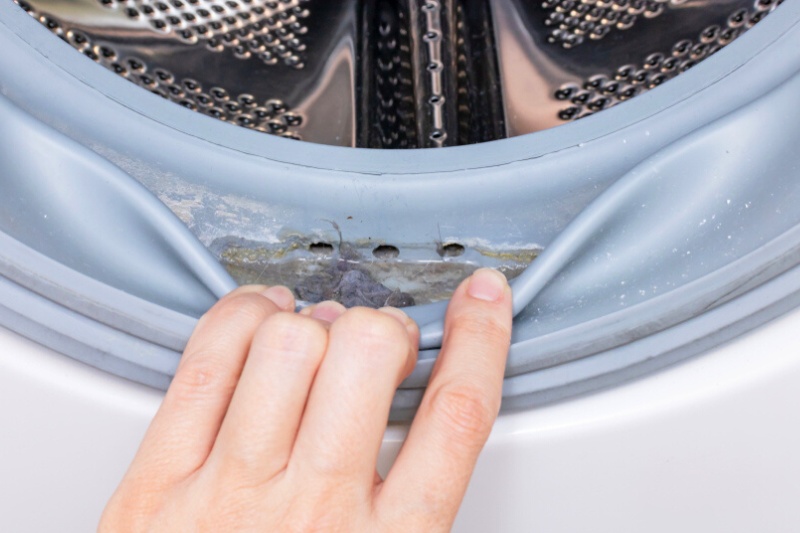
Carefully inspect the rubber seal around the washing machine door for mould, mildew, stains, or any visible buildup.
Make a mental note of the areas that require extra attention during cleaning. This will help you determine the best cleaning solution and which areas you need to specifically target.
Step 3: Prepare the cleaning solution
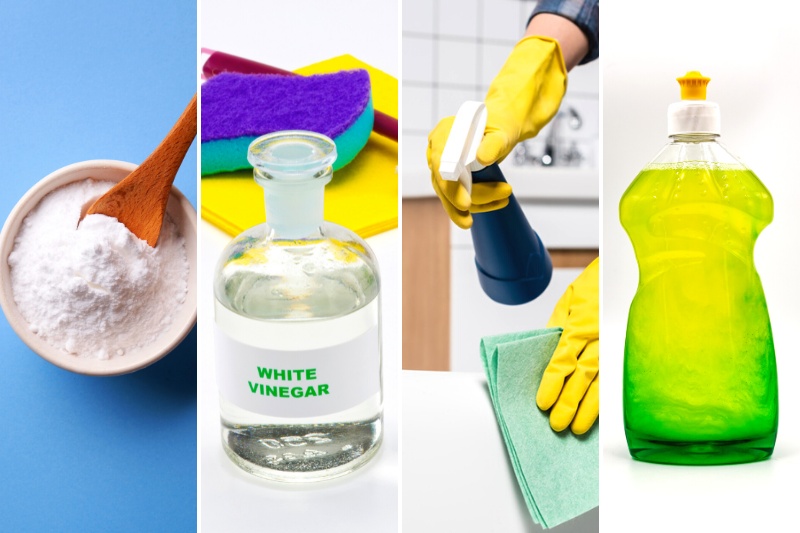
You need to prepare two cleaning solutions for cleaning the rubber seal of your machine:
- White vinegar: Mix equal parts (1:1) of warm water and white vinegar in a large bowl. The vinegar’s acidic properties effectively break down mildew and mould (eradicating up to 82% of mould) while eliminating any unpleasant odours.
- Bicarbonate of soda: For stubborn stains, create a cleaning paste using bicarbonate of soda and water.
Step 4: Clean the rubber seal

Dip the microfibre cloth or sponge into the vinegar solution and wring out any excess liquid. The cloth should be damp but not dripping wet.
Use this cloth to gently wipe down the entire gasket and remove mould from the rubber seal. Pay close attention to the areas with visible stains or mould growth.
For tougher stains, use the bicarbonate of soda paste and an old toothbrush to scrub the affected areas gently.
Use cotton swabs dipped in the vinegar solution to remove grime and dirt from corners and crevices that are difficult to reach with the cloth or toothbrush.
Step 5: Rinse and dry
After cleaning, use a clean damp cloth to wipe away any residual vinegar solution or bicarbonate of soda paste from the seal.
You must ensure that no cleaning agents remain on the rubber surface. Then, allow the seal to air dry completely before closing the washing machine door.
Step 6: Secondary cleaning
If the washing machine seal is still not entirely clean or has stubborn mould and mildew growth, repeat the cleaning process with a mild detergent or rubbing alcohol.
These agents can provide additional cleaning power, but they should be used sparingly and with caution to avoid causing irreversible damage to the rubber.
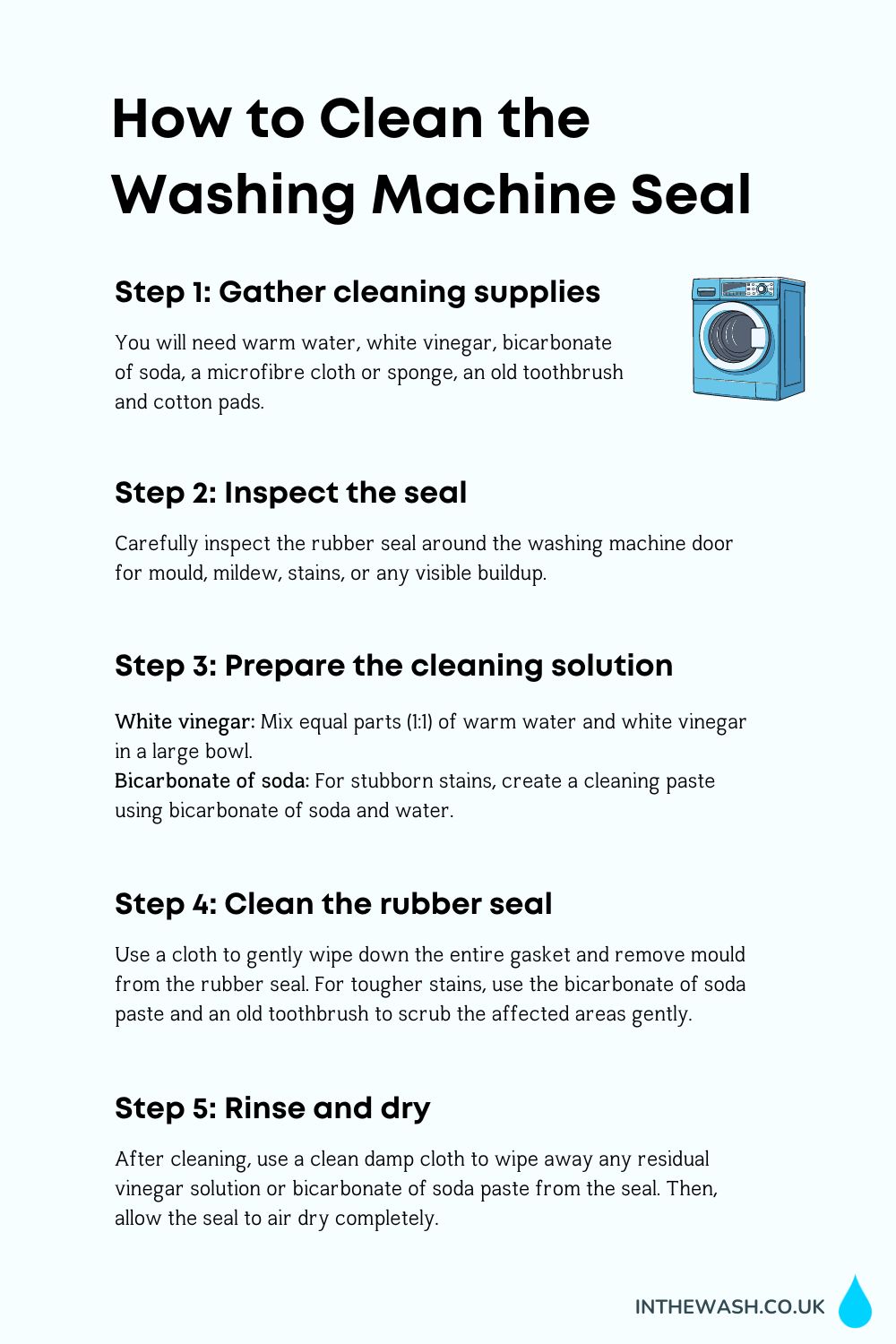
When Does the Washing Machine Seal Need Cleaning?

There are several indicators that your washing machine seal requires attention:
- Unpleasant odours: A musty smell coming from the washing machine indicates mould or mildew growth on the seal. However, a foul-smelling washing machine can also be caused by a build-up of detergent, oils, and hair in other parts of the appliance.
- Visible stains or discolouration: Check the rubber seal for visible signs of mould or mildew, which indicate the need for cleaning. Mildew has a greyish-white colour and is flat and powdery, whereas mould tends to be raised and looks like black spots.
- Water leakage: If you notice water leaking from the washing machine during or after a wash cycle, it could be due to a compromised seal. If this is due to a damaged seal, the water will leak from the door rather than beneath the appliance.
- Reduced washing efficiency: Dirty or clogged seals may interfere with the washing machine’s performance, resulting in subpar cleaning results. Poor cleaning can also be caused by overloading the machine or other maintenance issues, like a blocked drain hose.
Because many of these identifiers also point to other issues with your appliance, a combination of the above signs is usually the best indicator that the seal needs cleaning.
Alternatively, cleaning the seal every one to three months (depending on usage) should keep it clean without any issues arising.
How Do I Keep Mould Off My Washing Machine Seal?
Knowing how to clean the washing machine seal is great, but wouldn’t it be better if you could prevent it from getting dirty in the first place?
While complete elimination of mould and mildew is impossible, there are some things you can do to help slow and reduce the growth.
To maintain a clean washing machine seal, follow these preventive measures:
- Leave the washing machine door slightly ajar after each use to allow air circulation and help prevent mould from growing inside the rubber seal.
- Liquid detergents and fabric softeners can be a food source for mould. Regularly wipe down the rubber seal with a damp cloth to remove any detergent or fabric softener residues.
- Run a hot wash cycle with white vinegar once a month to clean the drum and the seal thoroughly, killing any mould and mildew from your appliance.
- Use high-efficiency detergents and avoid excessive use of fabric softeners to minimise residue buildup and reduce the likelihood of mould growth.
Why Is Cleaning a Washing Machine Rubber Seal Important?
The rubber seal forms a watertight barrier between the washing machine door and the drum, preventing water from leaking out during a wash cycle. Its flexible nature allows the door to close tightly while accommodating the constant movement of the drum.
Unfortunately, the seal’s location and exposure to moisture create an ideal environment for mould and mildew growth, especially in front-loading washing machines.
Additionally, detergent residues and fabric softener deposits can accumulate on the seal’s surface, leading to a breeding ground for bacteria and unpleasant odours.
Cleaning the washing machine seal is therefore a simple yet essential task to:
- Ensure optimal performance of your washing machine.
- Prevent water leakage from the appliance door.
- Maintain a hygienic laundry environment.
Additionally, regular maintenance and cleaning will not only extend the life of your washing machine but also keep your clothes fresh and odour-free.

Hannah has a passion for cleaning. She worked her way around Australia by cleaning hostels in exchange for free accommodation and used her cleaning skills to bag a job as a chalet host for a luxury ski company in France.
